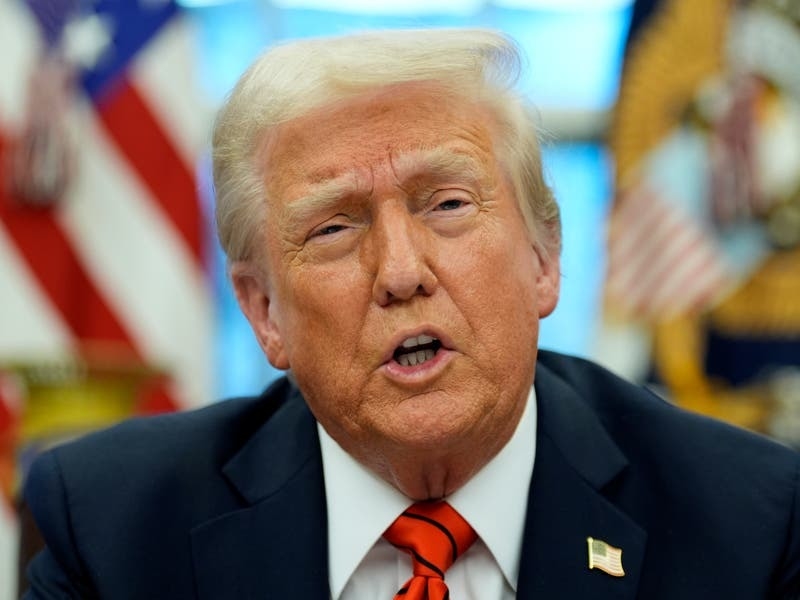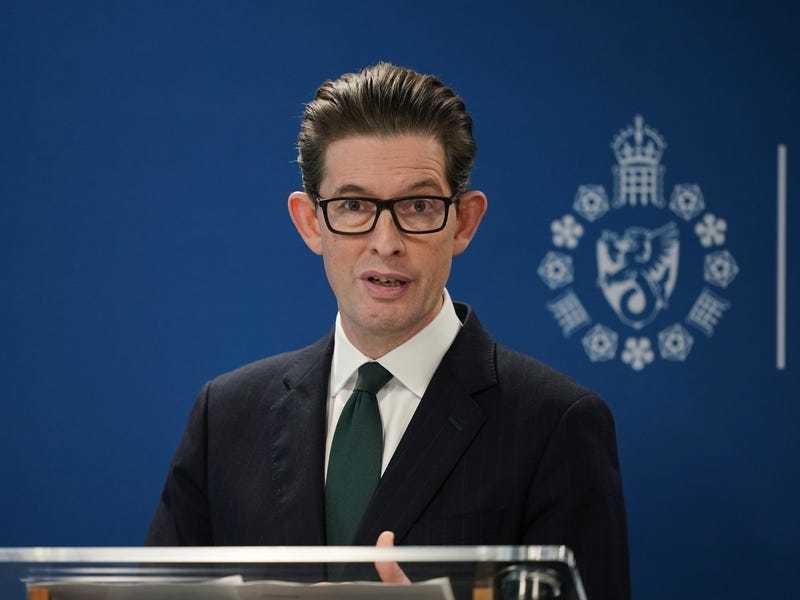US President Donald Trump has removed the exceptions and exemptions from his 2018 tariffs on steel, meaning that all steel imports will be taxed at a minimum of 25%.
Trump also hiked his 2018 aluminium tariffs to 25% from 10%.
“We were being pummelled by both friend and foe alike,” Mr Trump said as he signed two proclamations changing his orders during his first term that go into effect on March 4.

The moves are part of an aggressive push by the president to reset global trade, with Mr Trump saying that tax hikes on the people and companies buying foreign-made products will ultimately strengthen domestic manufacturing.
But the tariffs would hit allies as the four biggest sources of steel imports are Canada, Brazil, Mexico and South Korea, according to the American Iron and Steel Institute.
Mr Trump also intends this week to reset US taxes on all imports to match the same levels charged by other countries.
All of that comes on top of the 10% tariffs he already put on China, China’s retaliatory tariffs that started Monday and the Us tariffs planned for Canada and Mexico that have been suspended until March 1.
Monday’s tariffs almost immediately drew criticism from Canada, the largest source of steel imports.
Candace Laing, president and chief executive of the Canadian Chamber of Commerce, said that Mr Trump was a destabilising force in the global economy.
“Today’s news makes it clear that perpetual uncertainty is here to stay,” said Ms Laing.
The tariffs carry inflation risks at a moment when voters are already weary of high prices and fearful that price increases will eclipse any income gains.
Of the roughly 29 million net tonnes of steel imported into the United States last year, a little under 2% came from China.
But the White House maintains that exemptions to the tariffs provided over the previous four years by the Biden administration enabled steel and aluminium from China and Russia to go through other nations to reach the US.
While the tariffs could help the finances of steel mills and aluminium smelters, they could also increase costs for the manufacturers that use the metals as raw materials to make autos, appliances and other products.
The White House has yet to fully counter economic analyses showing that tariffs would hurt growth and intensify inflation, only saying that such analyses are incomplete without including the full extent of Mr Trump’s planned income tax cuts and regulatory curbs.
But Mr Trump has yet to propose a budget plan that would flesh out his policies so that economists can judge them.
The stock prices of steel companies climbed sharply on Monday as investors assumed the tariffs would increase their profits.
Cleveland-Cliffs, which wants to buy Pittsburgh’s US Steel, surged upward by nearly 18%.

But some companies that could pay more for steel and aluminium saw their share prices decrease.
For example, shares in automaker General Motors sold off, which could ultimately signal trouble for a manufacturing sector that Mr Trump has promised to revive.
“We have far more steel and aluminium-consuming businesses, think construction, machinery and equipment manufacturing, auto manufacturing, than we do steel and aluminium producers, so the advantage created for the producers comes at a much greater cost to downstream users,” said Erica York, vice president of tax policy at the right-leaning Tax Foundation.
Mr Trump reiterated as he signed the proclamations that more tariffs would be coming on computer chips, autos and pharmaceutical drugs.
But the president said that the import taxes would eventually enable more steel mills and aluminium plants to open in the US to avoid the tariffs.
“You’re ultimately going to have a price reduction because they’re going to make their steel here,” said Mr Trump, adding that there would also be more jobs.
Howard Lutnick, Mr Trump’s pick to be commerce secretary, said that the strengthened tariffs would bring 120,000 jobs back to the US, although it was not clear how he reached that number.
The primary metals industry added roughly 14,000 jobs during the first 12 months the steel and aluminium tariffs were originally imposed, though gains were quickly erased by the Covid-19 pandemic in 2020.
Panos Kouvelis, a professor specialising in supply chains at Washington University in St Louis, co-wrote a research paper last year finding that the 2018 tariffs did not deliver a stronger manufacturing sector as Mr Trump had promised.
“Simple economics will tell you if prices go up then demand will go down,” Mr Kouvelis said, stressing that what was needed instead were incentives that were specific to advanced technologies, national security needs and pharmaceutical needs.
“It requires smart, targeted industrial policies,” he said, “instead of general “It requires smart, targeted industrial policies,” he said, “instead of general tariffs on everything.”






